Introduction
In today’s rapidly evolving technological landscape, the automotive industry is experiencing a transformative shift towards connectivity and integration. The emergence of Connected Car Technology, combined with the Internet of Things (IoT), is revolutionizing the driving experience, enhancing safety, and opening up new possibilities for both drivers and manufacturers. In this article, we will delve into the world of connected cars, exploring the technology that powers them, their benefits, and the implications for the future of transportation.
The integration of connected car technology is not limited to the driving experience alone. These systems have the potential to revolutionize how we interact with vehicles and transport in general. The following points explore various aspects of the impact of connected car technology:
Enhanced Safety: Connected cars can communicate with each other and with traffic infrastructure, helping to prevent accidents through real-time data sharing. Features like automatic emergency braking and collision avoidance systems are becoming more effective with connectivity.
Efficiency and Convenience: Connectivity enables vehicles to optimize routes, helping drivers avoid traffic jams and reduce fuel consumption. Features like remote diagnostics also allow for proactive vehicle maintenance.
Entertainment and Infotainment: Passengers can enjoy a variety of entertainment options, from streaming services to in-car Wi-Fi. These features enhance the driving experience, making long journeys more enjoyable.
Environmental Impact: Connected car technology can contribute to reducing emissions by optimizing driving patterns and enabling electric vehicles to operate more efficiently.
Data Privacy and Security: As cars become more connected, concerns about data privacy and cybersecurity have risen. Protecting personal information and ensuring the security of vehicle systems are critical challenges.
Economic Opportunities: The growth of connected car technology has created opportunities for businesses involved in data analytics, software development, and cybersecurity, as well as the potential for new revenue streams for automakers.
Legislation and Regulation: Governments are working to establish guidelines and regulations to ensure the safe and responsible use of connected car technology. These regulations vary from region to region.
Consumer Adoption: While connected cars offer numerous benefits, the rate of consumer adoption varies. Factors like cost, awareness, and concerns about data privacy influence consumer decisions.
The Road Ahead: As technology continues to advance, connected car systems are likely to become more sophisticated, with features like autonomous driving capabilities and seamless integration with smart cities.
In summary, the integration of connected car technology is reshaping the automotive industry and the driving experience. It offers a range of benefits, from safety improvements and convenience enhancements to economic opportunities. However, it also raises important considerations, such as data privacy and security, that need to be addressed as the technology evolves.
Additionally, you can find further information on this topic by visiting this page: Smart Transportation: An Overview of Technologies and Applications
Connected Car Technology refers to the integration of internet-enabled features and services into vehicles. These innovations are made possible by a network of sensors, communication systems, and data processing units. Here are some key aspects of this transformative technology:
Enhanced Safety: One of the primary advantages of connected car technology is its potential to significantly enhance safety on the roads. Vehicles equipped with sensors and communication systems can detect and respond to potential hazards in real-time. For example, collision avoidance systems can automatically apply brakes or steer the vehicle to prevent accidents.
Advanced Navigation: Connected cars can provide drivers with up-to-date, real-time navigation information. This includes traffic updates, road closures, and even suggestions for the fastest routes based on current conditions. Advanced navigation systems can also factor in driver preferences and real-time data to optimize the driving experience.
Entertainment and Connectivity: Gone are the days of long, monotonous car rides. Connected cars offer a wide range of entertainment options, from streaming music and video to internet browsing. Passengers can stay connected to their digital lives, making travel more enjoyable and productive.
Remote Control and Monitoring: Many connected car systems allow owners to remotely monitor and control various vehicle functions through smartphone apps. This includes features like locking and unlocking doors, starting the engine, adjusting climate control, and checking vehicle diagnostics. Such capabilities enhance convenience and security.
Data Insights: Connected cars generate a wealth of data, from driving habits to vehicle performance metrics. This data can be valuable for manufacturers, service providers, and even drivers themselves. It can help optimize maintenance schedules, improve fuel efficiency, and personalize driving experiences.
Environmental Benefits: By optimizing routes, reducing congestion, and improving fuel efficiency, connected car technology can contribute to environmental sustainability. These vehicles can help reduce greenhouse gas emissions and minimize the ecological impact of transportation.
Evolving Towards Autonomy: Connected car technology is a crucial stepping stone towards autonomous vehicles. The ability to communicate and share data with other vehicles and infrastructure is fundamental for the safe operation of self-driving cars. As connected car networks expand, the groundwork for autonomous driving is laid.
Challenges and Concerns: While connected car technology offers numerous benefits, it also raises concerns about data privacy, cybersecurity, and the potential for technology malfunctions. Addressing these challenges is essential to ensure the safe and responsible deployment of connected car systems.
In summary, connected car technology is revolutionizing the automotive industry by enhancing safety, convenience, and efficiency. As it continues to evolve and integrate with other emerging technologies, we can expect further advancements in the way we drive and interact with vehicles.
Additionally, you can find further information on this topic by visiting this page: How Automotive IoT Solutions Will Modernize Vehicles – Intuz
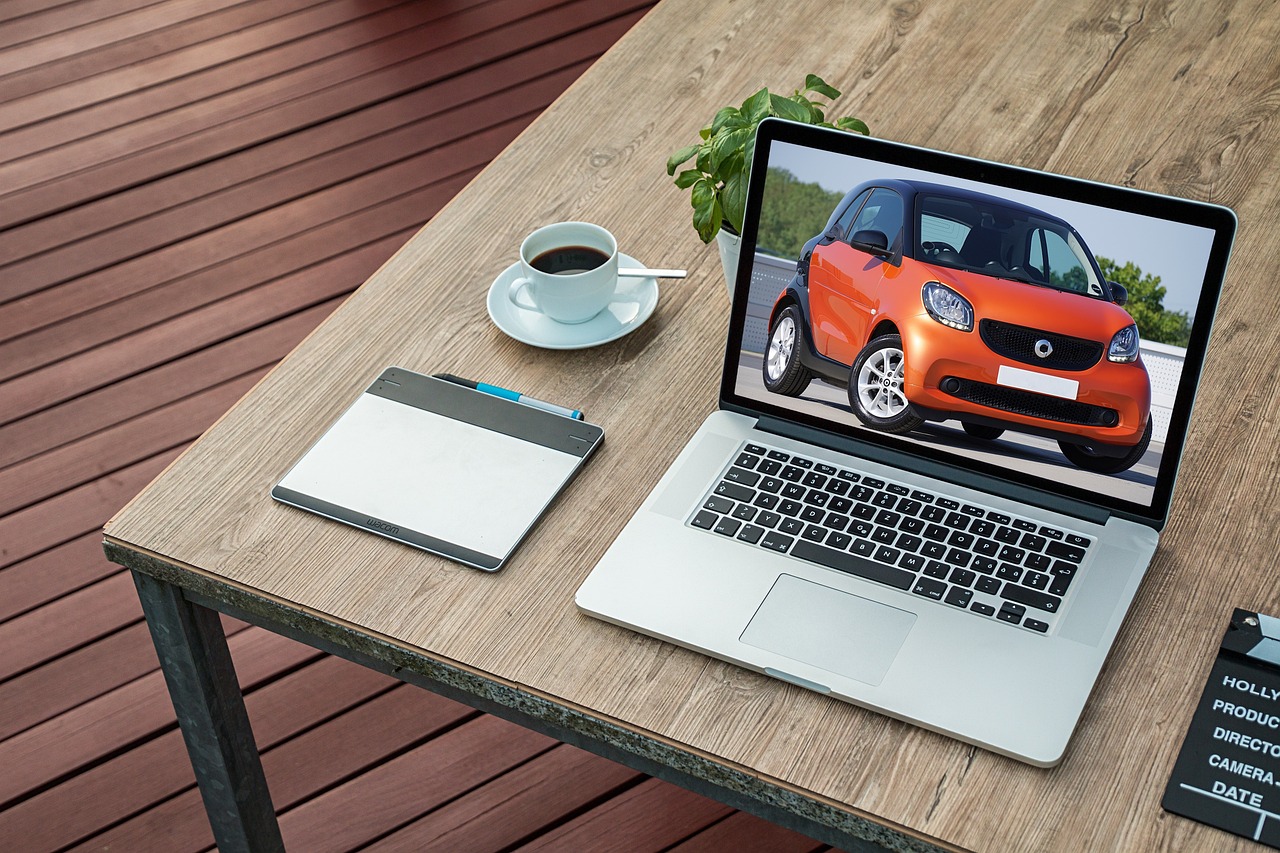
Connected cars are equipped with telematics systems that collect and transmit data about the vehicle’s performance, location, and more. This data is sent to cloud-based platforms, enabling real-time monitoring and analysis.
Drivers can access information about their vehicle, such as fuel efficiency, maintenance needs, and even diagnostics, using smartphone apps or web interfaces.
The integration of telematics systems in connected cars marks a significant leap forward in automotive technology. Here’s a closer look at how these systems are reshaping the driving experience and vehicle ownership:
1. Real-Time Monitoring: Telematics systems continuously gather a wealth of data from the vehicle’s sensors and components. This real-time monitoring goes far beyond basic information like speed and location. It encompasses a comprehensive view of the vehicle’s health, performance, and operational status.
2. Enhanced Vehicle Insights: Drivers now have unprecedented access to information about their vehicles. Telematics systems provide detailed insights into fuel efficiency, engine performance, tire pressure, and more. This wealth of information empowers drivers to make informed decisions about maintenance and driving habits, ultimately leading to cost savings and improved safety.
3. Predictive Maintenance: Telematics systems don’t just report on the current state of the vehicle; they also enable predictive maintenance. By analyzing data trends and performance metrics, these systems can anticipate when specific components may require attention or replacement. This proactive approach minimizes unexpected breakdowns and costly repairs.
4. Remote Diagnostics: In the event of an issue, drivers can rely on telematics systems for remote diagnostics. These systems can identify and report problems to the driver and, in some cases, to service centers. This capability streamlines the repair process and helps service technicians diagnose and address issues more efficiently.
5. Location-Based Services: Telematics systems play a pivotal role in location-based services. Drivers can use their connected cars to find nearby gas stations, parking spots, restaurants, and other points of interest. This convenience enhances the overall driving experience and reduces the stress of navigating unfamiliar areas.
6. Safety Features: Telematics systems can also incorporate safety features like automatic collision notification and emergency assistance. In the event of an accident, the system can automatically alert emergency services and provide critical information about the vehicle’s location and condition, potentially saving lives.
7. Fuel Efficiency Optimization: With access to real-time data on fuel consumption and driving habits, drivers can optimize their driving to achieve better fuel efficiency. Telematics systems offer insights into factors such as acceleration, braking, and speed, helping drivers make eco-conscious choices.
8. Connectivity Beyond the Vehicle: The data collected by telematics systems isn’t limited to the vehicle itself. It can be transmitted to cloud-based platforms, allowing for comprehensive analysis and insights. This data can also be shared with automakers and third-party service providers, enabling new features and services for drivers.
9. Customized User Experience: Telematics systems are highly customizable, allowing drivers to tailor their connected car experience. From personalized dashboard displays to notifications about upcoming maintenance, these systems put the driver in control of their automotive journey.
In summary, the integration of telematics systems in connected cars represents a remarkable convergence of automotive and digital technology. These systems provide drivers with a wealth of information and insights, enhancing safety, efficiency, and the overall driving experience. As technology continues to advance, we can anticipate even more innovative uses for telematics data, further revolutionizing the way we interact with and benefit from our vehicles.
Looking for more insights? You’ll find them right here in our extended coverage: How Automotive IoT Solutions Will Modernize Vehicles – Intuz

Modern vehicles feature advanced infotainment systems that provide entertainment, navigation, and connectivity options. These systems often have touchscreens, voice recognition, and smartphone integration.
Passengers can enjoy streaming music, podcasts, and even access social media and emails safely while on the road.
As technology continues to advance, infotainment systems in vehicles are becoming more sophisticated. These systems now incorporate artificial intelligence to provide personalized recommendations, real-time traffic updates, and predictive maintenance alerts. The seamless integration of smartphones and smart devices enhances the overall driving experience, making it safer and more enjoyable.
To delve further into this matter, we encourage you to check out the additional resources provided here: Smart Transportation: An Overview of Technologies and Applications
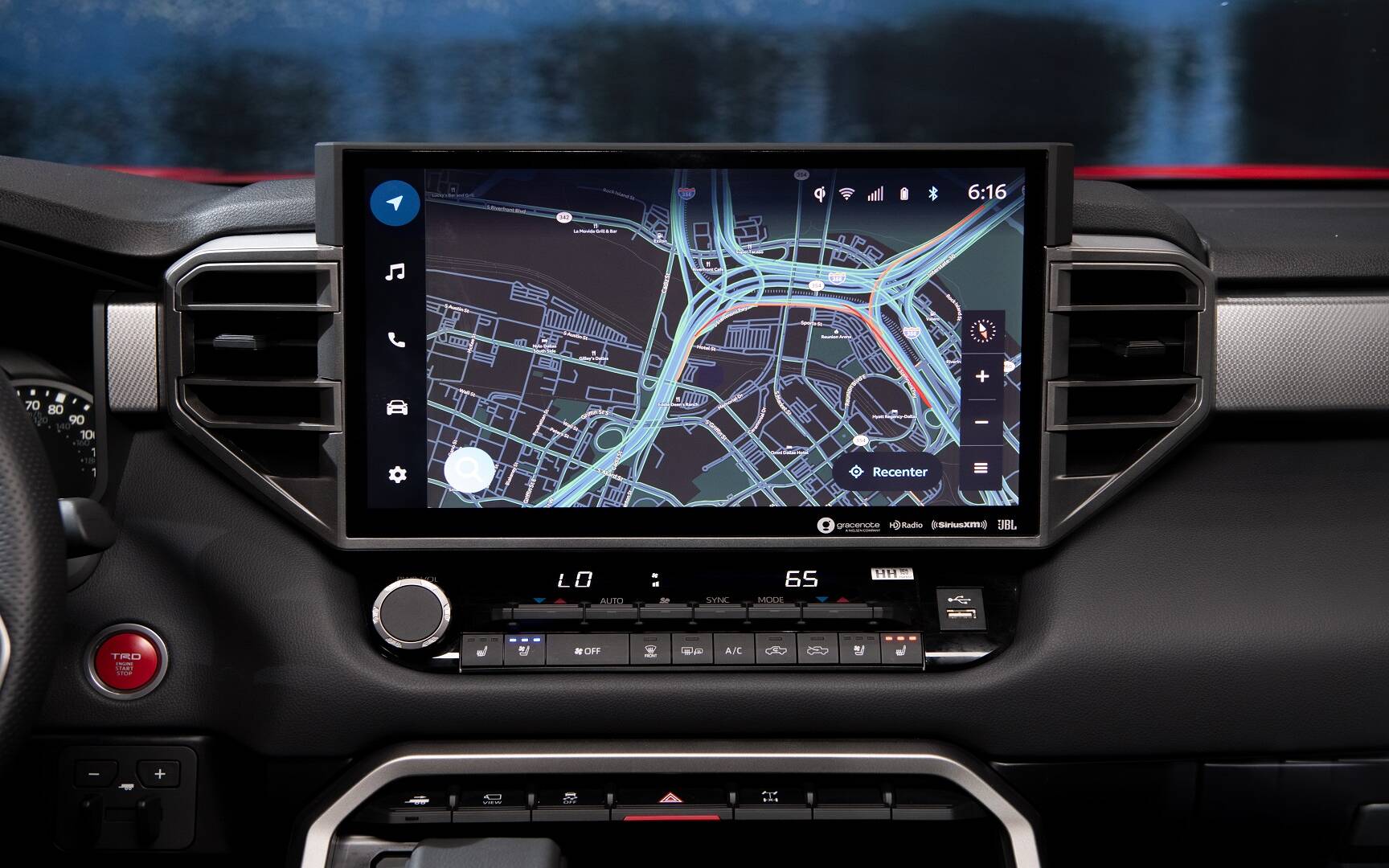
Connected cars come with a suite of safety features, such as collision avoidance systems, adaptive cruise control, and lane-keeping assistance. These technologies use sensors and data connectivity to enhance driver safety.
In the event of an accident, some connected cars can automatically contact emergency services, providing vital information about the incident.
Connected car technology has ushered in a new era of road safety by leveraging cutting-edge innovations. Let’s explore how these safety features are making a significant impact:
Collision Avoidance Systems: Connected cars are equipped with advanced sensors and cameras that constantly monitor the vehicle’s surroundings. When these systems detect an imminent collision, they can autonomously apply brakes or steer the vehicle away from danger, reducing the risk of accidents.
Adaptive Cruise Control: This feature not only maintains a safe following distance from the vehicle ahead but can also adjust the car’s speed based on real-time traffic conditions. It takes the stress out of stop-and-go traffic and minimizes the chances of rear-end collisions.
Lane-Keeping Assistance: Lane departure warning systems and lane-keeping assistance ensure that the vehicle stays within its lane. If the car drifts unintentionally, it can gently steer itself back into the correct lane, preventing accidents caused by driver distraction or fatigue.
Emergency Services Communication: In the unfortunate event of an accident, connected cars can automatically transmit crucial information to emergency services. This includes the vehicle’s location, the severity of the impact, and the number of passengers. Such rapid and accurate data helps first responders arrive at the scene faster and better prepared.
Pedestrian Detection: Connected cars are also equipped with sensors that can identify pedestrians and cyclists near the vehicle. If the system detects a potential collision, it can issue warnings to the driver or, in some cases, initiate emergency braking to prevent accidents involving vulnerable road users.
Driver Assistance and Alerts: Beyond collision avoidance, these systems provide drivers with real-time alerts and assistance. They can warn of blind-spot intrusions, upcoming obstacles, and even driver fatigue, helping to reduce the likelihood of accidents caused by human error.
Data-Driven Insights: Connected car technology collects and analyzes vast amounts of data, providing insights into driving behavior. This data can be valuable for identifying areas where drivers may need additional training or education to improve their safety on the road.
Continuous Improvement: As technology evolves, so do these safety features. Manufacturers regularly release software updates that enhance the effectiveness of existing safety systems and introduce new ones. This ongoing improvement is a hallmark of connected car safety.
In conclusion, connected car technology is fundamentally changing how we approach road safety. By integrating sensors, real-time data, and autonomous systems, these vehicles are not only making driving safer but also actively working to prevent accidents. As these technologies continue to advance, we can expect even greater strides in automotive safety in the years to come.
Explore this link for a more extensive examination of the topic: What Is Connected Vehicle Technology and What Are the Use …

The Internet of Things (IoT) plays a crucial role in shaping the future of connected cars. IoT involves connecting everyday objects to the internet, enabling them to collect and share data. In the automotive context, IoT integration offers several benefits:
Real-Time Vehicle Monitoring: IoT sensors integrated into connected cars continuously collect data on various vehicle parameters such as engine performance, tire pressure, fuel consumption, and battery health. This real-time monitoring allows drivers to proactively address maintenance issues, preventing breakdowns and reducing repair costs.
Fleet Management: For businesses with vehicle fleets, IoT-enabled connected cars provide a comprehensive fleet management solution. Fleet managers can track the location, condition, and performance of each vehicle, optimizing routes, scheduling maintenance, and ensuring efficient operations.
Predictive Maintenance: IoT sensors not only monitor current vehicle conditions but also enable predictive maintenance. By analyzing historical data and identifying patterns, connected cars can anticipate when specific components are likely to fail and alert drivers or service centers. This proactive approach minimizes downtime and reduces overall maintenance expenses.
Enhanced Safety Features: IoT integration enhances safety features in connected cars. These vehicles can communicate with traffic infrastructure, other vehicles, and pedestrians, reducing the risk of accidents. For example, a car can receive alerts from roadside sensors about icy road conditions ahead and adjust its speed and braking accordingly.
Environmental Efficiency: IoT-enabled connected cars can optimize fuel efficiency and reduce emissions. By collecting data on driving behavior, traffic conditions, and environmental factors, these vehicles can suggest eco-friendly driving habits or even take control to minimize fuel consumption.
Improved Navigation: IoT-integrated navigation systems provide more accurate and dynamic routing. They can factor in real-time traffic data, road closures, weather conditions, and even parking availability to offer the most efficient routes, reducing travel time and fuel usage.
Enhanced User Experience: IoT integration transforms the in-car experience. Drivers and passengers can connect their smartphones, tablets, and other devices seamlessly to the car’s infotainment system, accessing apps, music, and other services. Voice-activated assistants powered by IoT technology also enhance user convenience and safety.
Data-Driven Insights: The data collected through IoT sensors in connected cars is a valuable resource. Manufacturers, insurers, and transportation authorities can use this data to gain insights into driving patterns, traffic flow, and road conditions. These insights can inform road infrastructure improvements, traffic management strategies, and even personalized insurance plans.
Challenges and Security: Despite the numerous benefits, IoT integration in connected cars raises concerns about cybersecurity. Protecting against unauthorized access and data breaches is paramount. Manufacturers and developers must continually update security measures to safeguard both the vehicle and the privacy of drivers and passengers.
In conclusion, the Internet of Things is driving innovation in the automotive industry, making connected cars smarter, safer, and more efficient. As IoT technology continues to evolve, it will play an increasingly vital role in shaping the future of transportation, paving the way for safer, more sustainable, and more connected journeys on the road.
Additionally, you can find further information on this topic by visiting this page: Internet of Things (IoT): Opportunities, issues and challenges …
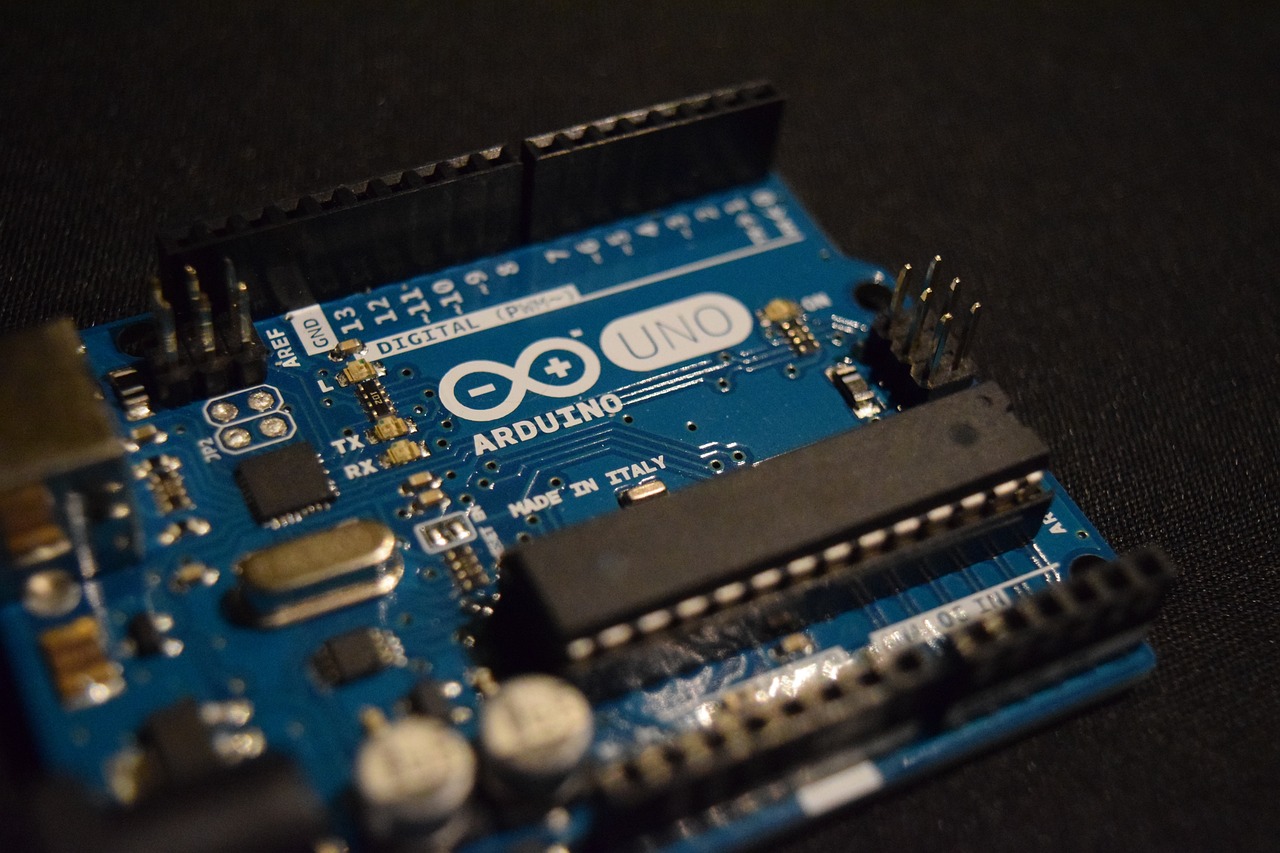
IoT-connected traffic lights and road infrastructure can communicate with vehicles, providing real-time traffic updates and rerouting suggestions to reduce congestion.
Smart traffic management can lead to reduced travel times and lower fuel consumption.
The marriage of the Internet of Things (IoT) with traffic lights and road infrastructure has the potential to revolutionize urban mobility and transportation in profound ways. Here’s a closer look at how IoT-connected traffic lights and infrastructure are reshaping the way we navigate through cities:
1. Real-Time Traffic Updates: IoT-connected traffic lights and sensors embedded in the road can provide real-time traffic updates to both drivers and traffic management centers. This data includes information about congestion, accidents, road closures, and other incidents. Drivers can receive these updates via in-car displays, smartphone apps, or even voice assistants, allowing them to make informed decisions about their routes.
2. Dynamic Traffic Light Control: IoT-enabled traffic lights can adjust their signal timings based on real-time traffic conditions. When traffic is light, lights can remain green for longer periods, facilitating smoother traffic flow. Conversely, during heavy congestion, traffic lights can prioritize main routes or intersections that require more efficient management.
3. Adaptive Routing: One of the significant benefits of IoT-connected traffic infrastructure is its ability to suggest alternative routes to drivers. When traffic conditions deteriorate on a planned route, the system can automatically propose detours that optimize travel time and reduce congestion. This adaptive routing minimizes frustration and fuel consumption.
4. Predictive Analysis: IoT sensors can collect data on traffic patterns and predict potential congestion points before they occur. This proactive approach allows traffic management centers to deploy resources more effectively and implement preventive measures, such as adjusting traffic light timings or redirecting traffic.
5. Environmental Impact: Smart traffic management has a positive environmental impact by reducing traffic congestion and idling times. With fewer cars stuck in traffic, there are lower emissions and fuel consumption. This contributes to improved air quality and reduced greenhouse gas emissions, aligning with sustainability goals.
6. Enhanced Safety: IoT-connected infrastructure can also enhance road safety. Traffic lights can communicate directly with nearby vehicles to provide warnings about potential hazards, such as pedestrians crossing the road. Additionally, smart infrastructure can detect speeding vehicles and alert authorities, helping reduce accidents and improve overall road safety.
7. Data-Driven Decision-Making: The data collected by IoT-connected traffic infrastructure is a valuable resource for urban planners and transportation authorities. By analyzing this data, they can make informed decisions about road improvements, infrastructure investments, and traffic management strategies, ultimately leading to more efficient and safer road networks.
8. Scalability: IoT-connected traffic solutions are highly scalable. They can be deployed in a single intersection or scaled up to cover entire cities. This flexibility allows municipalities to implement smart traffic management solutions that align with their specific needs and budgets.
In summary, the integration of IoT technology into traffic lights and road infrastructure has the potential to create smarter and more efficient urban transportation systems. By harnessing real-time data, adaptive control, and predictive analysis, these systems not only reduce congestion and travel times but also contribute to environmental sustainability and road safety. As cities continue to grow and face increasing mobility challenges, IoT-connected traffic management will play a crucial role in shaping the future of urban transportation.
Don’t stop here; you can continue your exploration by following this link for more details: Smart Transportation: An Overview of Technologies and Applications

IoT sensors monitor vehicle components and detect signs of wear and tear. This data can be used to schedule maintenance proactively, preventing breakdowns and reducing repair costs.
Vehicle manufacturers can also receive valuable feedback on the performance of their vehicles, leading to improvements in future models.
Furthermore, the Internet of Things (IoT) has transformed vehicle maintenance into a data-driven, predictive process. Sensors placed throughout the vehicle continuously monitor crucial components, from engine health to tire pressure. When anomalies are detected, data is transmitted to both drivers and service centers, allowing for timely maintenance and repairs. This not only enhances safety and prolongs vehicle lifespan but also reduces environmental impact by minimizing unnecessary emissions from poorly maintained vehicles. In essence, IoT is revolutionizing vehicle maintenance, making it more efficient, cost-effective, and eco-friendly.
For a comprehensive look at this subject, we invite you to read more on this dedicated page: Digitalization and Energy – Analysis – IEA
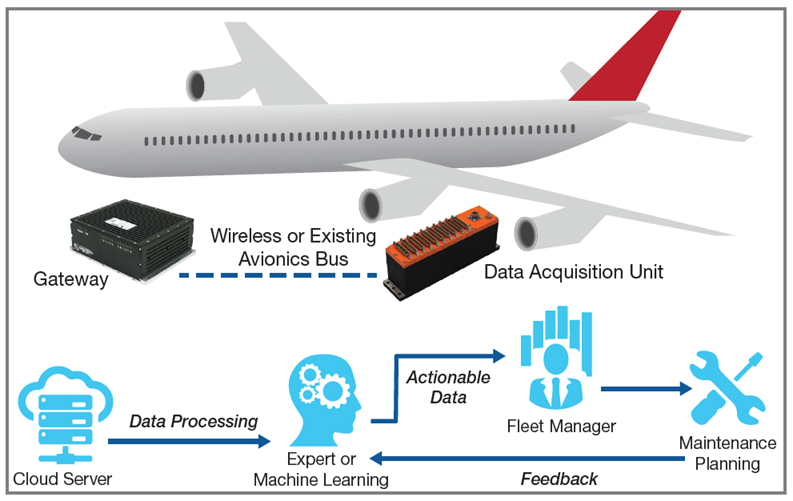
IoT-connected vehicles can contribute to reduced emissions by optimizing routes, reducing idle times, and promoting eco-friendly driving habits.
Environmental sensors can provide data on air quality, helping authorities identify areas with high pollution levels and take corrective actions.
Connected cars, powered by the Internet of Things (IoT), are not only transforming the way we drive but also making a positive impact on the environment. Here’s how these smart vehicles are driving sustainability:
Optimizing Routes: IoT-connected cars use real-time traffic data and predictive algorithms to find the most efficient routes. By avoiding congestion and selecting optimal paths, these vehicles reduce travel times and fuel consumption. This not only saves drivers money but also decreases emissions by minimizing time spent idling in traffic.
Reducing Idle Times: Many IoT-connected cars are equipped with systems that automatically shut off the engine when the vehicle is stationary for extended periods, such as at traffic lights or during extended stops. This “idle-off” feature conserves fuel and reduces emissions, especially in urban areas with frequent traffic stops.
Eco-Friendly Driving Habits: IoT technology can coach drivers on eco-friendly driving habits. Real-time feedback on acceleration, braking, and speed can help drivers adopt smoother, more fuel-efficient driving techniques. By encouraging these practices, connected cars contribute to lower emissions and greater fuel efficiency.
Air Quality Monitoring: Environmental sensors integrated into IoT-connected cars can measure air quality and pollution levels. This data is not only valuable for drivers to make informed decisions about when and where to travel but also for authorities to identify pollution hotspots. By pinpointing areas with poor air quality, cities and governments can implement targeted measures to improve environmental conditions.
Reduced Fuel Consumption: Thanks to advanced data analytics and connectivity, connected cars can optimize fuel usage. For instance, they can suggest when to refuel based on the cheapest prices in the vicinity, saving drivers money and reducing fuel consumption.
Electric Vehicle Integration: IoT technology is instrumental in electric vehicle (EV) adoption. It helps EV owners locate charging stations, plan routes that include charging stops, and monitor their vehicle’s charging status remotely. This convenience encourages more people to switch to electric vehicles, which produce zero tailpipe emissions.
Fleet Management: In commercial transportation, IoT-connected vehicles contribute to greener logistics. Fleet managers can use real-time data to optimize delivery routes, reduce fuel consumption, and minimize the environmental impact of their operations.
Data-Driven Decisions: IoT-connected cars generate vast amounts of data related to driving patterns, fuel consumption, and emissions. This data can be aggregated and analyzed to identify trends and areas for further improvement in eco-friendly driving practices.
In conclusion, IoT-connected vehicles are at the forefront of sustainable transportation. By leveraging real-time data, predictive analytics, and environmental sensors, these smart cars promote eco-friendly driving behaviors, reduce emissions, and contribute to cleaner air and more efficient transportation systems. As the technology continues to evolve, the positive environmental impact of connected cars is set to grow even further, making our roads greener and more sustainable.
For additional details, consider exploring the related content available here Smart Transportation: An Overview of Technologies and Applications
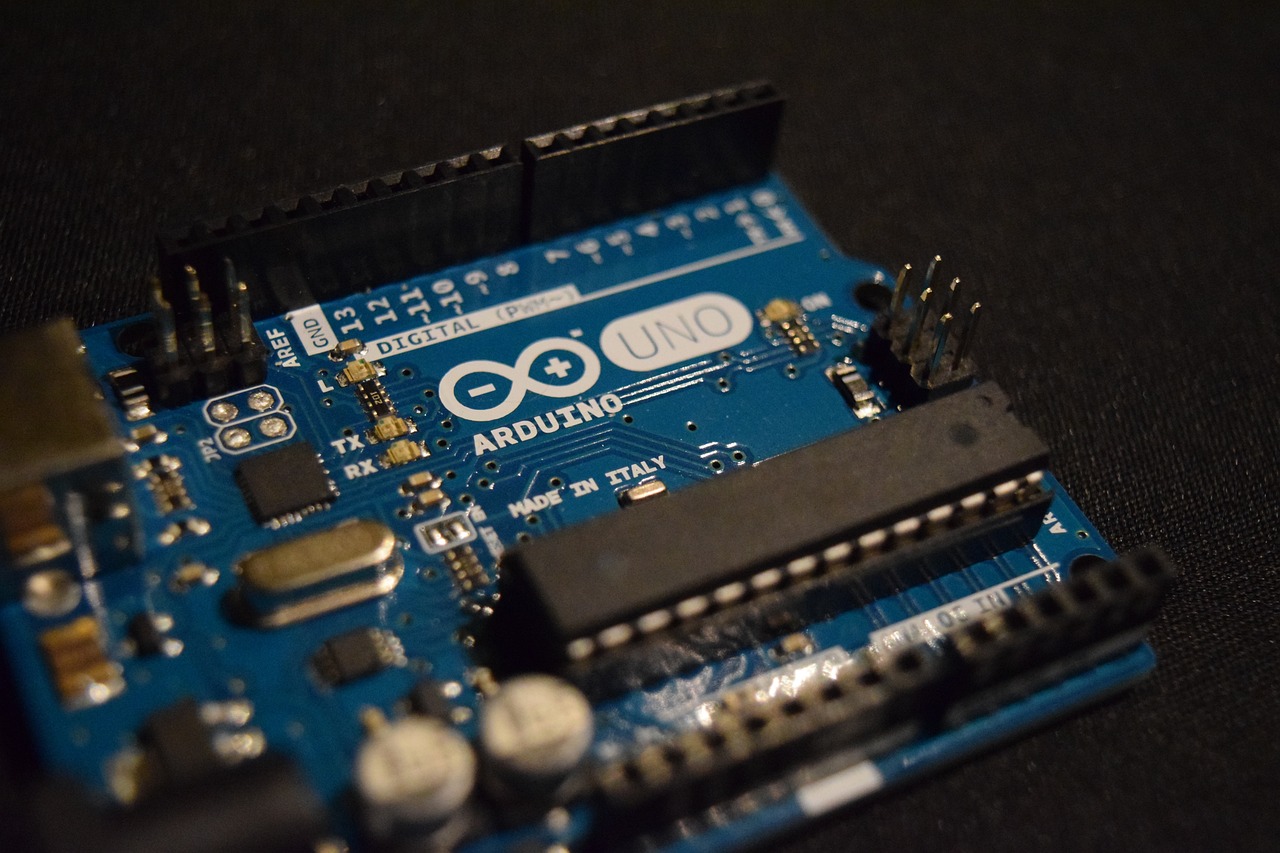
The integration of Connected Car Technology and IoT is reshaping the automotive industry and the way we move. Here are some future possibilities and considerations:
Autonomous Driving: The combination of Connected Car Technology and IoT will accelerate the development of autonomous vehicles. IoT sensors, coupled with real-time data exchange, enable autonomous cars to navigate complex traffic scenarios, communicate with other vehicles and infrastructure, and make split-second decisions for safe driving. This advancement promises to revolutionize transportation, improving safety and reducing congestion.
Smart Traffic Management: IoT-connected vehicles will play a pivotal role in creating smarter, more efficient traffic management systems. Traffic signals, road signs, and even the road surface itself will communicate with vehicles to optimize traffic flow, reduce bottlenecks, and minimize gridlock. This will lead to faster commutes, less time wasted in traffic, and lower emissions.
Personalized Services: IoT integration will allow for highly personalized in-car experiences. Vehicles will adapt to individual preferences, adjusting settings for climate control, infotainment, and seating comfort based on user profiles. Additionally, IoT will enable location-based recommendations for services like restaurants, gas stations, and entertainment venues.
Enhanced Safety: The combination of connected cars and IoT will enhance road safety dramatically. Vehicles will be able to anticipate potential collisions, warn drivers of hazardous conditions ahead, and even take corrective actions autonomously to prevent accidents. In emergency situations, connected cars can transmit distress signals to nearby vehicles and emergency services, reducing response times.
Efficient Electric Mobility: As electric vehicles (EVs) become more widespread, IoT integration will optimize their charging and usage. IoT-connected EVs can identify nearby charging stations, reserve charging slots, and charge during off-peak hours when electricity rates are lower. This not only benefits EV owners but also contributes to a more balanced and efficient electrical grid.
Data Monetization: The vast amount of data generated by IoT-connected cars presents opportunities for data monetization. With user consent, anonymized and aggregated data can be sold to third parties, such as traffic management authorities, city planners, insurers, and marketers. This can create new revenue streams for vehicle manufacturers and data analytics companies.
Environmental Impact: IoT-connected vehicles can provide valuable data on environmental conditions and air quality. By aggregating this data, authorities can identify pollution hotspots and take measures to improve air quality. This information also empowers consumers to make eco-conscious choices about when and how they travel.
Privacy Concerns: The increased connectivity of vehicles also raises privacy concerns. As cars collect and transmit data about their occupants and usage, there must be strict privacy safeguards in place. Manufacturers and regulators will need to establish clear guidelines to protect the privacy of vehicle occupants.
Security Challenges: With greater connectivity comes an increased risk of cyberattacks. IoT-connected cars are vulnerable to hacking attempts that could compromise safety and privacy. To ensure the security of connected vehicles, robust cybersecurity measures and regular software updates will be essential.
In summary, the integration of Connected Car Technology and IoT holds immense potential to transform the automotive industry and transportation as a whole. These innovations promise to make driving safer, more efficient, and highly personalized. However, addressing security and privacy concerns will be crucial as we move toward this connected future.
Don’t stop here; you can continue your exploration by following this link for more details: Exploring the IoT and Connected Car Market: Revolutionizing …

The combination of connected cars and IoT is a stepping stone toward fully autonomous vehicles. These vehicles will communicate with each other and infrastructure to navigate safely and efficiently.
The convergence of connected cars and the Internet of Things (IoT) is a pivotal moment in the journey towards fully autonomous vehicles. It represents a transformative shift in the way we envision the future of transportation. Here’s an exploration of how this combination is propelling us toward the era of fully autonomous vehicles:
1. Seamless Communication: Connected cars are equipped with a myriad of sensors, cameras, and communication modules that enable them to exchange data not only with their drivers but also with other vehicles and roadside infrastructure. This seamless communication creates a networked ecosystem where vehicles share information about their surroundings, location, speed, and intent.
2. Enhanced Safety: The synergy between connected cars and IoT fosters advanced safety features. Vehicles can communicate with each other to prevent accidents and navigate complex traffic scenarios. For example, if one vehicle suddenly brakes, it can send a signal to nearby cars to alert them, helping avoid rear-end collisions.
3. Cooperative Driving: IoT-connected vehicles can engage in cooperative driving, where they coordinate their movements to optimize traffic flow. This can lead to smoother merging on highways, reduced congestion, and more efficient use of road space.
4. Traffic Management: IoT-equipped infrastructure, such as smart traffic lights and road sensors, can relay real-time traffic data to connected vehicles. This enables cars to receive dynamic routing suggestions, adapt their speed to avoid congestion, and make informed decisions about the most efficient routes.
5. Environmental Impact: Fully autonomous vehicles, guided by IoT and connected car technology, can optimize driving patterns for fuel efficiency and emissions reduction. These vehicles can also contribute to smoother traffic flow, reducing stop-and-go driving and associated fuel consumption.
6. Scalability: The scalability of IoT infrastructure allows for the gradual integration of autonomous features. As more vehicles become connected and capable of cooperative driving, the transition to fully autonomous vehicles becomes smoother and more gradual.
7. Redundancy and Reliability: IoT-connected systems can enhance the redundancy and reliability of autonomous driving systems. Vehicles can cross-reference data from multiple sources, including their sensors, cameras, and external infrastructure, to ensure safe navigation.
8. Real-World Testing: Connected cars serve as a valuable testing ground for autonomous driving algorithms and technologies. They allow manufacturers to collect massive amounts of real-world data, fine-tune algorithms, and develop robust systems capable of handling complex and unpredictable driving scenarios.
9. Regulatory and Policy Considerations: The adoption of connected car and IoT technology brings to light important regulatory and policy considerations. Issues related to data privacy, cybersecurity, and standardized communication protocols need to be addressed to ensure the safe and responsible deployment of fully autonomous vehicles.
In conclusion, the combination of connected cars and the Internet of Things represents a significant stepping stone toward the realization of fully autonomous vehicles. This synergy creates a dynamic and cooperative transportation ecosystem where vehicles communicate with each other and infrastructure, leading to enhanced safety, efficiency, and sustainability. As technology continues to advance, we are on the cusp of a transportation revolution that will redefine mobility and shape the cities of the future.
You can also read more about this here: 5G IoT and the Future of Connected Vehicle | Digi International
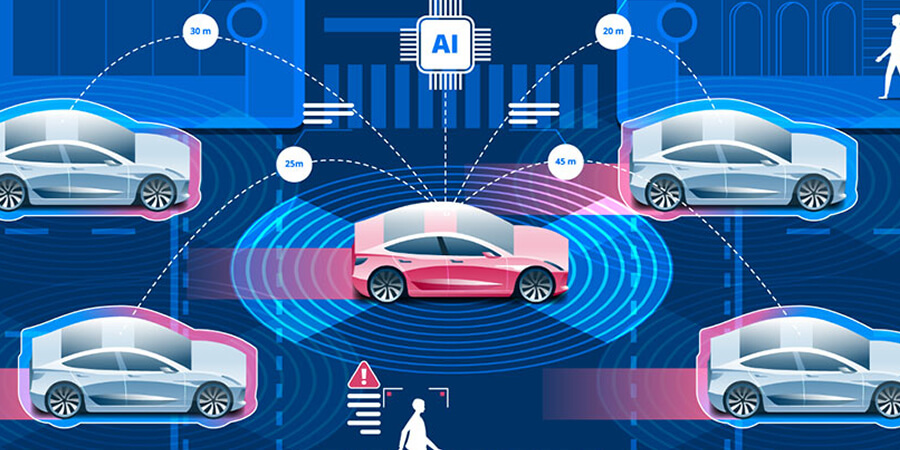
As technology continues to advance, the in-car experience will become more personalized and intuitive. Voice-activated assistants, augmented reality displays, and biometric authentication are on the horizon.
The future of in-car technology promises a seamless and personalized driving experience. Voice-activated virtual assistants, like AI-powered companions, will not only respond to commands but also learn and adapt to individual preferences, making interactions more intuitive and efficient.
Augmented reality (AR) displays will overlay real-time information onto the driver’s field of view, enhancing navigation, safety, and entertainment. Imagine dynamic navigation cues projected onto the windshield or highlighting potential obstacles in real-time, making driving safer and more enjoyable.
Biometric authentication will add an extra layer of security and personalization. Cars will recognize drivers based on their unique physiological characteristics, such as fingerprints, retinal scans, or facial recognition, customizing settings and access to the vehicle accordingly.
As these technologies mature and integrate seamlessly into our vehicles, the future of in-car experiences will undoubtedly be marked by convenience, safety, and personalization, fundamentally transforming the way we interact with our automobiles.
Should you desire more in-depth information, it’s available for your perusal on this page: Internet of Things (IoT): Opportunities, issues and challenges …

As vehicles become more connected, the need for robust cybersecurity measures becomes paramount. Protecting vehicle data and systems from cyberattacks is a growing concern.
The increasing connectivity of vehicles brings numerous benefits, from improved safety to enhanced convenience. However, it also opens the door to cybersecurity risks that must be addressed:
Data Security: Connected cars generate and transmit vast amounts of data, including sensitive information like driver profiles, navigation history, and vehicle diagnostics. Ensuring the security and privacy of this data is crucial. Robust encryption and authentication measures are necessary to prevent unauthorized access or data breaches.
Protection Against Hacking: Vehicles are essentially rolling computers with multiple entry points for potential hackers. Cybercriminals could exploit vulnerabilities in software or hardware to gain control of critical systems, jeopardizing the safety of drivers and passengers. Cybersecurity solutions must continually evolve to stay ahead of emerging threats.
Firmware and Software Updates: Regular updates to a vehicle’s firmware and software are essential to patch vulnerabilities and improve security. Manufacturers should provide mechanisms for seamless, over-the-air updates to keep vehicles protected against evolving cyber threats.
Authentication and Access Control: Implementing robust authentication mechanisms ensures that only authorized individuals can access a vehicle’s systems and data. Multi-factor authentication, biometrics, and secure login protocols can help prevent unauthorized access.
Intrusion Detection Systems: Intrusion detection systems can monitor a vehicle’s network for unusual or suspicious activity. These systems can identify potential cyberattacks and trigger appropriate responses, such as isolating affected systems or alerting the driver.
Secure Communication Protocols: Secure communication between a vehicle and external networks, such as the cloud or other vehicles, is essential. Implementing strong encryption and secure communication protocols helps safeguard data and prevent eavesdropping or tampering.
Cybersecurity Awareness: Both manufacturers and consumers play a role in cybersecurity. Manufacturers must prioritize cybersecurity in their vehicle design and manufacturing processes. On the consumer side, raising awareness about safe practices, such as avoiding unsecured Wi-Fi networks, is crucial.
Regulatory Framework: Governments and regulatory bodies are increasingly recognizing the importance of automotive cybersecurity. Establishing clear regulations and standards can incentivize manufacturers to invest in cybersecurity measures and hold them accountable for ensuring the safety of connected vehicles.
Collaboration and Information Sharing: Collaboration among automakers, technology companies, and cybersecurity experts can help identify and mitigate threats more effectively. Sharing information about emerging threats and vulnerabilities can lead to faster responses and improved cybersecurity practices.
In conclusion, as vehicles become more connected and autonomous, addressing cybersecurity concerns is paramount. A proactive and multi-faceted approach that includes encryption, regular updates, intrusion detection, and collaboration among stakeholders is essential to safeguarding the connected cars of today and the future. By prioritizing cybersecurity, we can ensure that the benefits of connected vehicles are enjoyed without compromising safety and privacy.
Explore this link for a more extensive examination of the topic: Internet of Things (IoT): Opportunities, issues and challenges …

Conclusion
Connected Car Technology and IoT integration are propelling the automotive industry into a new era of mobility. From improved safety and convenience to reduced emissions and enhanced traffic management, the benefits of this technology are far-reaching. As the technology continues to evolve, we can expect exciting developments that will transform the way we drive and experience transportation, ultimately leading to a more connected and efficient future on the road.
Connected Car Technology and IoT integration represent a profound shift in how we interact with vehicles and the roadways. Here’s a closer look at the exciting developments and considerations as we journey toward a more connected and efficient automotive future:
5G Connectivity: The rollout of 5G networks will revolutionize IoT integration in vehicles. With faster and more reliable internet connectivity, cars will be able to exchange data with even greater speed and accuracy. This will enable real-time updates, such as traffic information, weather conditions, and software updates, to enhance the driving experience.
Blockchain for Security: Blockchain technology is being explored to enhance the security and privacy of connected cars. By creating tamper-proof records of data exchanges and ownership, blockchain can protect against unauthorized access and ensure the integrity of vehicle data.
Edge Computing: To process the vast amount of data generated by connected cars in real-time, edge computing is gaining importance. Edge computing allows data processing to occur locally within the vehicle, reducing latency and enabling faster response times for critical functions like autonomous driving and safety alerts.
AI and Machine Learning: Artificial intelligence and machine learning algorithms are becoming increasingly sophisticated in analyzing IoT data from connected cars. This enables predictive maintenance, where vehicles can detect and address potential issues before they become major problems, reducing downtime and repair costs.
Smart Cities Integration: As more cities embrace smart infrastructure, the synergy between connected cars and smart cities will grow stronger. Traffic signals, parking systems, and emergency services will seamlessly communicate with vehicles, optimizing traffic flow and safety.
Eco-Friendly Driving: IoT integration will promote eco-friendly driving behaviors. Smart coaching systems can provide real-time feedback to drivers, encouraging fuel-efficient practices, such as smoother acceleration and braking, and reducing emissions.
Enhanced User Interfaces: The in-car user interface will continue to evolve. Augmented reality (AR) displays and heads-up displays (HUDs) will overlay navigation and safety information onto the windshield, reducing distractions and enhancing the driver’s field of view.
Evolving Insurance Models: IoT data from connected cars is reshaping the insurance industry. Usage-based insurance (UBI) models are gaining popularity, where insurance premiums are based on real-time driving behavior and vehicle data. Safer drivers can benefit from reduced insurance costs.
Legislation and Regulation: Governments are working to establish regulatory frameworks for connected cars and IoT integration. These regulations will focus on safety standards, data privacy, and cybersecurity to ensure the responsible deployment of connected vehicle technology.
Consumer Adoption: As consumers become more accustomed to IoT-connected features in their cars, demand for these technologies will rise. Vehicle manufacturers will need to prioritize user-friendly interfaces and educational efforts to facilitate seamless adoption.
Data Ownership and Control: The question of who owns and controls the data generated by connected cars remains a significant consideration. Clear policies and agreements will need to be in place to address data ownership, usage, and access rights.
In conclusion, the fusion of Connected Car Technology and IoT integration is poised to revolutionize the automotive landscape. From smarter, safer, and more efficient driving experiences to reducing environmental impacts, the possibilities are vast. As these technologies continue to evolve and mature, they will shape the future of mobility and redefine our relationship with vehicles. However, addressing security, privacy, and regulatory challenges will be essential to unlock their full potential.
For a comprehensive look at this subject, we invite you to read more on this dedicated page: Internet of Things (IoT): Opportunities, issues and challenges …
More links
For a comprehensive look at this subject, we invite you to read more on this dedicated page: Smart Transportation: An Overview of Technologies and Applications
